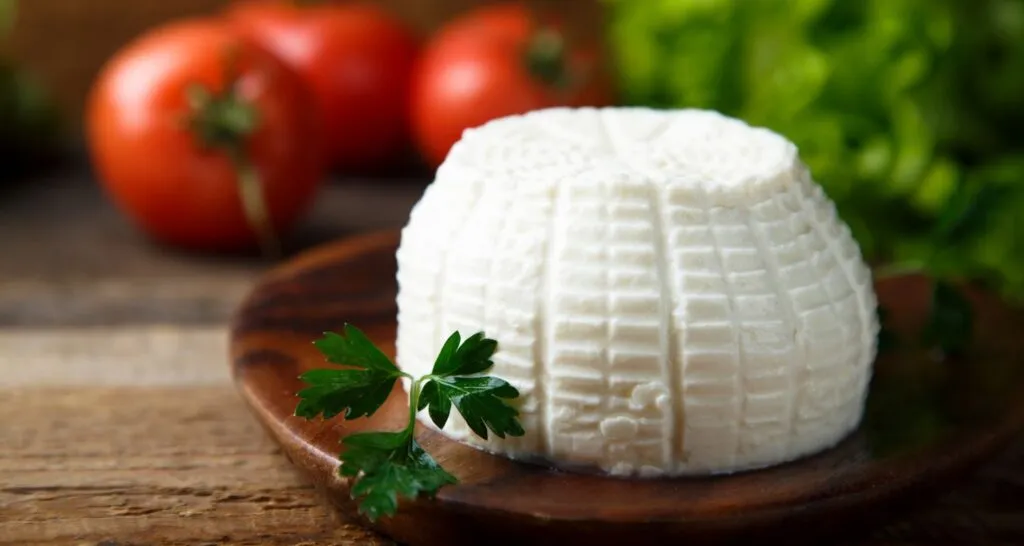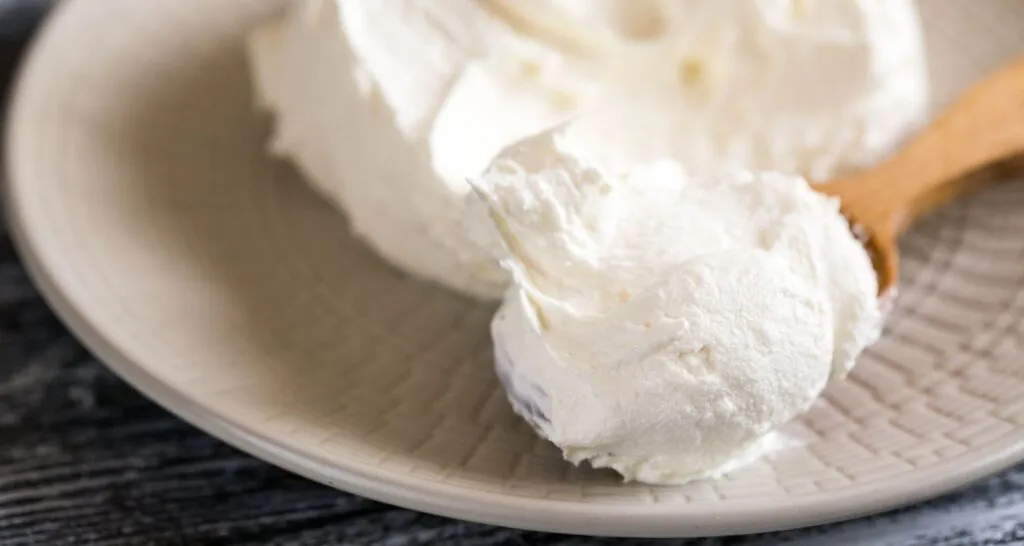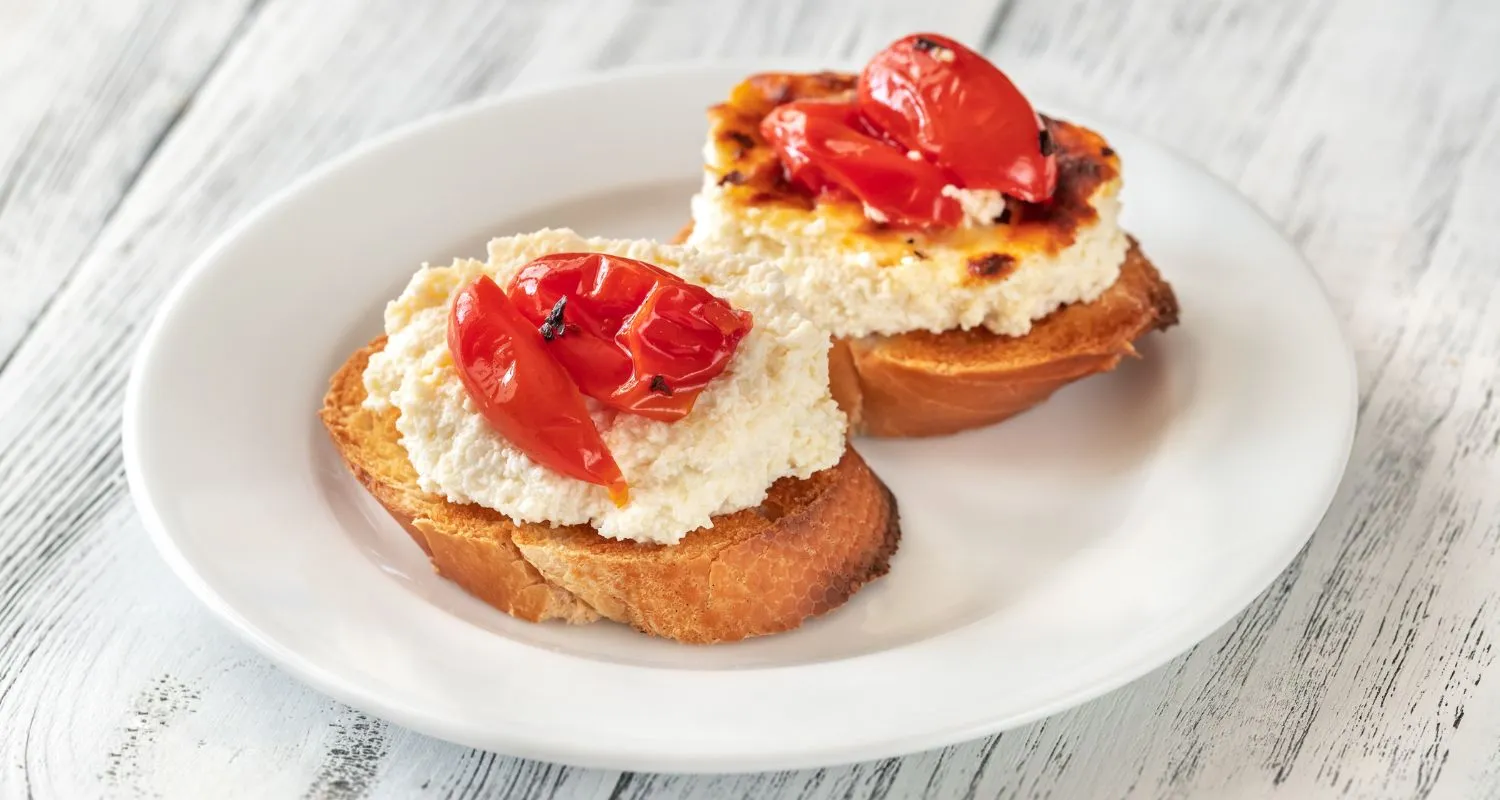In the culinary world, few delights are as universally cherished as cheese, and among its myriad forms, whipped ricotta stands out for its creamy texture and versatility. This article embarks on a journey to explore the ins and outs of making, serving, and savoring whipped ricotta. From the basic steps to whip up this creamy delight to creative serving suggestions and answers to frequently asked questions, we’ve got you covered. So, let’s dive into the creamy, dreamy world of whipped ricotta and discover how to elevate your appetizers, breakfasts, and snacks to a whole new level of deliciousness.
Introduction to Whipped Ricotta
What is Whipped Ricotta?
Whipped ricotta is a creamy, airy, and versatile cheese delight. It’s made by whipping fresh whole milk ricotta until it’s light and spreadable. This process transforms the already delicious ricotta into a fluffier version of itself, enhancing its natural, mild flavor. It’s a testament to the magic that can happen with just a few simple ingredients and a bit of culinary technique.
The Rising Popularity of Whipped Ricotta
In recent years, whipped ricotta has seen a surge in popularity. And for good reason! Its smooth texture and ability to pair with a variety of flavors make it a hit among food enthusiasts. Whether it’s spread on a warm piece of toast, served as a dip with crudités, or used as a base for elegant appetizers, whipped ricotta has proven its versatility time and again. Plus, its simplicity means that anyone, from novice cooks to seasoned chefs, can whip up this delightful spread.
In the next sections, we’ll dive into the nitty-gritty of making your own whipped ricotta, serving suggestions to wow your guests, and much more. So, grab your mixer and your appetite, and let’s get started on this culinary adventure.
Making Whipped Ricotta
Ingredients and Tools
Before we dive into the whipping process, let’s talk about what you’ll need. The star of the show, whole milk ricotta, should be as fresh as you can find. The freshness impacts the final texture and flavor, making it creamier and more delightful. For a deeper dive into making ricotta from scratch, check out How to Make Homemade Ricotta, which can elevate your whipped ricotta to new heights.
You’ll also need a mixer, either stand or hand-held, with a whisk attachment to achieve that perfect airy consistency. A few additional ingredients like fresh herbs, lemon zest, and high-quality honey will enhance the flavor profile of your whipped ricotta.
Step-by-Step Guide
Preparing the Ricotta
Start with your whole milk ricotta, ensuring it’s at room temperature to make the whipping process smoother. If you’re using store-bought ricotta, consider straining it for a few minutes to remove any excess liquid, ensuring a thicker final product.
Whipping Process Explained
Place the ricotta in a mixing bowl and begin whipping at a medium speed. After about two minutes, you’ll notice the ricotta transforming into a creamy, smooth texture. If you prefer a lighter consistency, feel free to whip it a bit longer, but be careful not to overdo it.
Finishing Touches: Herbs and Honey
Once whipped to perfection, it’s time to add the finishing touches. A blend of freshly chopped mint and parsley, combined with a drizzle of high-quality honey and a sprinkle of lemon zest, can elevate your whipped ricotta. The honey not only adds sweetness but also beautifully complements the freshness of the herbs. For the best honey varieties for cooking, The Best Honey Varieties for Cooking offers great insights into choosing the right one for your recipe.
Mix these ingredients gently into your whipped ricotta or layer them on top for a visually appealing presentation. Now, your whipped ricotta is ready to serve and impress.
In the next part, we’ll explore various ways to serve your freshly made whipped ricotta, ensuring your culinary creation is the star of any meal or gathering.
Serving Suggestions
Whipped ricotta, with its creamy texture and versatile flavor profile, is a culinary chameleon. Here, we’ll explore some creative ways to serve this delightful cheese, ensuring it becomes a staple in your entertaining repertoire.

Creative Serving Ideas
As a Dip: Pairings and Presentation
Imagine a bowl of fluffy, light whipped ricotta sitting at the center of your table, surrounded by an array of dipping options. Grilled baguette slices, crisp vegetables, or even savory crackers make for perfect companions. The key here is contrast; the creamy ricotta pairs beautifully with items that bring crunch and a hint of saltiness to the palate.
Spread on Toast: A Breakfast Delight
Start your day on a high note by spreading a generous layer of whipped ricotta on a slice of toasted sourdough. Top it with a drizzle of honey, a sprinkle of sea salt, and some fresh berries for a breakfast that’s both simple and luxurious. The combination of flavors and textures will make your morning meal anything but ordinary.
Elegant Appetizers: Crostini and More
For a more sophisticated presentation, crostini offers the perfect canvas. Top these toasted bread slices with whipped ricotta, followed by a combination of toppings like roasted tomatoes, basil, and a balsamic glaze. Each bite delivers a burst of flavor, making these appetizers a hit at any gathering.
Pairing with Drinks
A light, crisp, citrusy white wine complements the creamy richness of whipped ricotta beautifully. If you’re in the mood for something pink, a chilled rosé also pairs wonderfully, adding a touch of elegance to your happy hour. For non-alcoholic options, consider sparkling water with a twist of lemon or lime, offering a refreshing contrast to the richness of the cheese.
In the next section, we’ll delve into variations and substitutions, showing you how to customize whipped ricotta to suit any taste or dietary preference. Whether you’re looking for sweet, savory, or something in between, the possibilities are endless.
Variations and Substitutions
Whipped ricotta is a canvas for culinary creativity, allowing for endless variations and substitutions. Here, we’ll explore how to tailor this versatile cheese to suit any palate or dietary requirement, ensuring everyone can enjoy its creamy goodness.
Flavor Variations
Sweet vs. Savory Options
For a sweet take, mix in a bit of vanilla extract and top with fresh berries and a drizzle of honey. This version makes a delightful dessert or a luxurious breakfast spread. On the savory side, incorporate roasted garlic, sun-dried tomatoes, or even a pesto swirl. These additions transform the ricotta into a robust dip or spread that’s perfect for hearty appetizers.
Incorporating Different Herbs and Spices
The addition of fresh herbs can dramatically change the profile of your whipped ricotta. Basil, thyme, or rosemary each lend their unique flavors, making the ricotta a perfect complement to various dishes. For a bit of heat, a sprinkle of red pepper flakes or a dash of smoked paprika can add a warm, smoky dimension.
Dietary Adaptations
Making Vegan Whipped Ricotta
For a dairy-free alternative, almond, cashew, or coconut-based ricottas can be whipped into a similar texture. While the flavor profile may vary, these vegan versions still provide a creamy base for both sweet and savory creations. Adding nutritional yeast can also impart a cheesy flavor, making the vegan version just as satisfying.

Gluten-Free Serving Options
Serving whipped ricotta with gluten-free crackers or on gluten-free toast ensures everyone can enjoy this treat without concern. For those avoiding gluten, ensuring the accompaniments are safe is just as important as the ricotta itself.
In the next part, we’ll address some frequently asked questions about whipped ricotta. From storage tips to serving suggestions, we’ll cover the essentials to ensure your whipped ricotta experience is as smooth and enjoyable as the cheese itself.
FAQs
Whipped ricotta, with its creamy texture and versatile uses, often brings up a few questions. Here, we’ll tackle some of the most common inquiries to help you make the most of this delightful cheese.
How to Store Whipped Ricotta
If you find yourself with leftovers, storing whipped ricotta is a breeze. Simply place it in an airtight container and refrigerate. It will keep well for 1-2 days. If you’ve already mixed in herbs or other toppings, try to enjoy it within a day to maintain the best flavor and texture.
What does whipped ricotta taste like?
Whipped ricotta is known for its creamy, smooth texture and mild, slightly sweet flavor. Unlike its denser, traditional counterpart, the whipping process incorporates air, making it lighter and fluffier. Consequently, it’s often used as a spread or in desserts for its ability to complement both savory and sweet dishes.
Is cream cheese just whipped ricotta?
While cream cheese and whipped ricotta share a creamy texture, they are distinct products. Cream cheese is richer and has a tangy flavor, owing to its different base and fermentation process. On the other hand, whipped ricotta is lighter, with a milder taste, making it a versatile ingredient in both savory and sweet recipes.
Why is my whipped ricotta liquid?
Liquid whipped ricotta could result from over-whipping or using a ricotta with high water content. To achieve the desired consistency, it’s crucial to start with a well-drained ricotta and whip it gently, just until it becomes smooth and creamy, avoiding over-processing which can lead to separation.
What is ricotta made of?
Ricotta is traditionally made from the whey left over from cheese-making, although it can also be made from whole milk. The whey is reheated, sometimes with additional milk, until the remaining proteins coagulate into soft curds, which are then strained to create the final product.
Does ricotta taste like mascarpone?
Ricotta and mascarpone differ significantly in taste and texture. Mascarpone is creamier and richer, with a buttery flavor, while ricotta is lighter, with a mild and slightly sweet taste. Despite these differences, both can be used interchangeably in some recipes, adjusting for texture and flavor.
Does ricotta taste like cheese?
Ricotta does have a cheese flavor, but it’s milder and less intense than many other cheeses. Its subtle sweetness and soft texture make it unique, often used in Italian dishes like lasagna, cannoli, and ricotta cheesecake for its delicate taste.
Is ricotta healthier than cream cheese?
Ricotta can be considered healthier than cream cheese due to its lower fat and calorie content. It’s also higher in protein, making it a nutritious option for those looking to add a creamy texture to meals without the added richness of cream cheese.
What is the difference between mascarpone and ricotta?
The main difference lies in their origins and textures; mascarpone is a cream-based cheese, known for its smooth, rich texture, while ricotta is made from whey, resulting in a lighter, grainier consistency. Their flavors also differ, with mascarpone being sweeter and ricotta offering a mild, slightly sweet taste.
What can I use instead of whipped ricotta?
For a substitute, consider using cream cheese, mascarpone, or Greek yogurt, depending on the recipe. Each offers a similar creamy texture, with adjustments to flavor and consistency possibly needed to closely mimic whipped ricotta’s unique qualities.
Why is my ricotta turning pink?
Ricotta turning pink might be an indication of bacterial growth, suggesting spoilage. It’s essential to store ricotta properly and use it within the recommended timeframe to ensure safety and prevent foodborne illness.
Why is my ricotta not creamy?
If your ricotta isn’t creamy, it may be due to insufficient fat content or not being whipped enough. Opting for full-fat ricotta and ensuring it’s well-whipped can help achieve a smoother, creamier texture.
Why is my ricotta rubbery?
Ricotta becomes rubbery when overcooked or overmixed, which causes the proteins to tighten and squeeze out moisture. Gentle handling and minimal processing are key to preserving its delicate texture.
Does whipped cream cheese taste better?
Whether whipped cream cheese tastes better is subjective and depends on personal preference. It’s lighter and fluffier than its original form, with a mild, tangy flavor that many find appealing for spreads and recipes.
What does whipped cream cheese taste like?
Whipped cream cheese offers a light, airy texture with a mild, tangy flavor. The whipping process makes it more spreadable and less dense, ideal for bagels, dips, and frosting, without altering its fundamental taste.
Is ricotta salty or sweet?
Ricotta is primarily mild and slightly sweet, but its flavor can vary depending on additional ingredients or the specific recipe it’s used in. While inherently not salty, it can be seasoned to enhance savory dishes or sweetened for desserts.
Can Whipped Ricotta Be Made Ahead of Time?
Absolutely! You can whip up your ricotta a day or two in advance of your event or meal. Keep it stored in the refrigerator in an airtight container. Just give it a quick stir before serving to refresh its creamy texture.
What Are the Best Herbs for Whipped Ricotta?
The beauty of whipped ricotta lies in its adaptability. Fresh basil, mint, parsley, or thyme each add a unique twist. Feel free to experiment with combinations to find your favorite. For a deeper dive into using fresh herbs, Guide to Fresh Herbs offers excellent insights.
Doubling the Recipe for Larger Gatherings
Doubling or even tripling the recipe for whipped ricotta is straightforward. Just ensure your mixer can accommodate the increased volume. It’s a fantastic way to cater to a crowd, offering a gourmet touch to your gatherings.
Creative Uses Beyond Dipping
Whipped ricotta isn’t just for dipping. Spread it on sandwiches for a creamy layer, use it as a base for flatbread pizzas, or dollop it on baked potatoes. Its versatility extends to breakfast, too, serving as a luxurious topping for pancakes or waffles.
In the concluding part of our journey through the world of whipped ricotta, we’ll wrap up with some final thoughts and encouragement to explore the endless possibilities this simple yet sophisticated cheese offers.
Conclusion
As we wrap up our exploration of whipped ricotta, it’s clear that this creamy, versatile cheese is more than just a dip or spread. It’s a testament to the beauty of simplicity in cooking, transforming a few basic ingredients into something truly special. Whether you’re a seasoned chef or a culinary novice, whipped ricotta offers a canvas for creativity, inviting you to experiment with flavors, textures, and pairings.
Recap of Key Points
We’ve journeyed through the essentials of making whipped ricotta, from selecting the freshest ingredients to achieving that perfect airy texture. We’ve delved into serving suggestions that span from breakfast to appetizers, explored variations to suit every palate and dietary need, and answered some common questions to ensure your whipped ricotta is a success every time.
Encouragement to Experiment
The true joy of whipped ricotta lies in its flexibility. So, I encourage you to experiment. Mix in your favorite herbs, spices, or sweeteners. Pair it with unexpected ingredients. Use it as a foundation for your culinary creations. The possibilities are endless, and the results are always delicious.
Whipped ricotta is more than just a recipe; it’s a reminder that great food doesn’t have to be complicated. With a little creativity and some basic ingredients, you can create something that delights the senses and brings people together. So, go ahead, give it a try, and see where your culinary imagination takes you.
